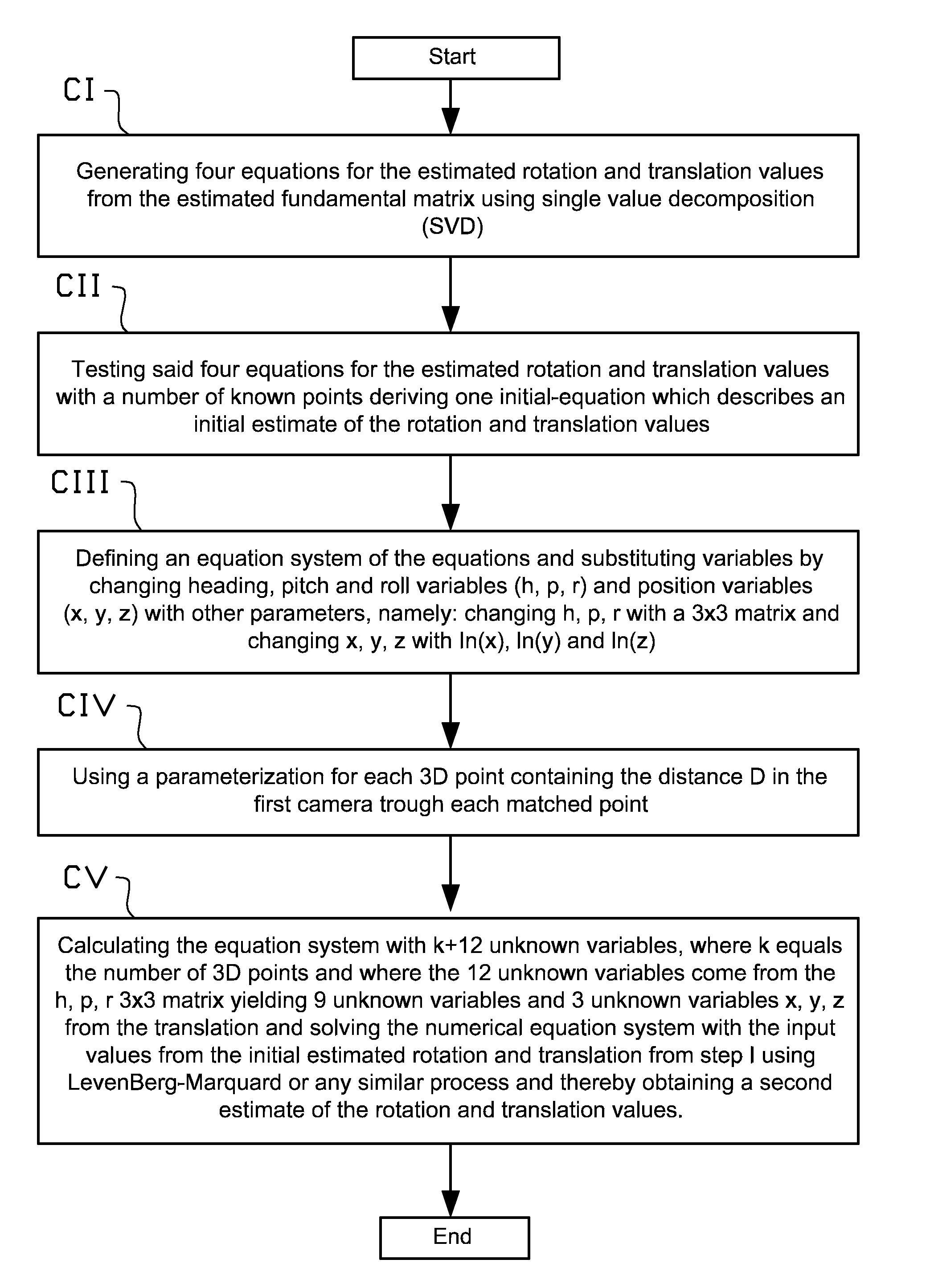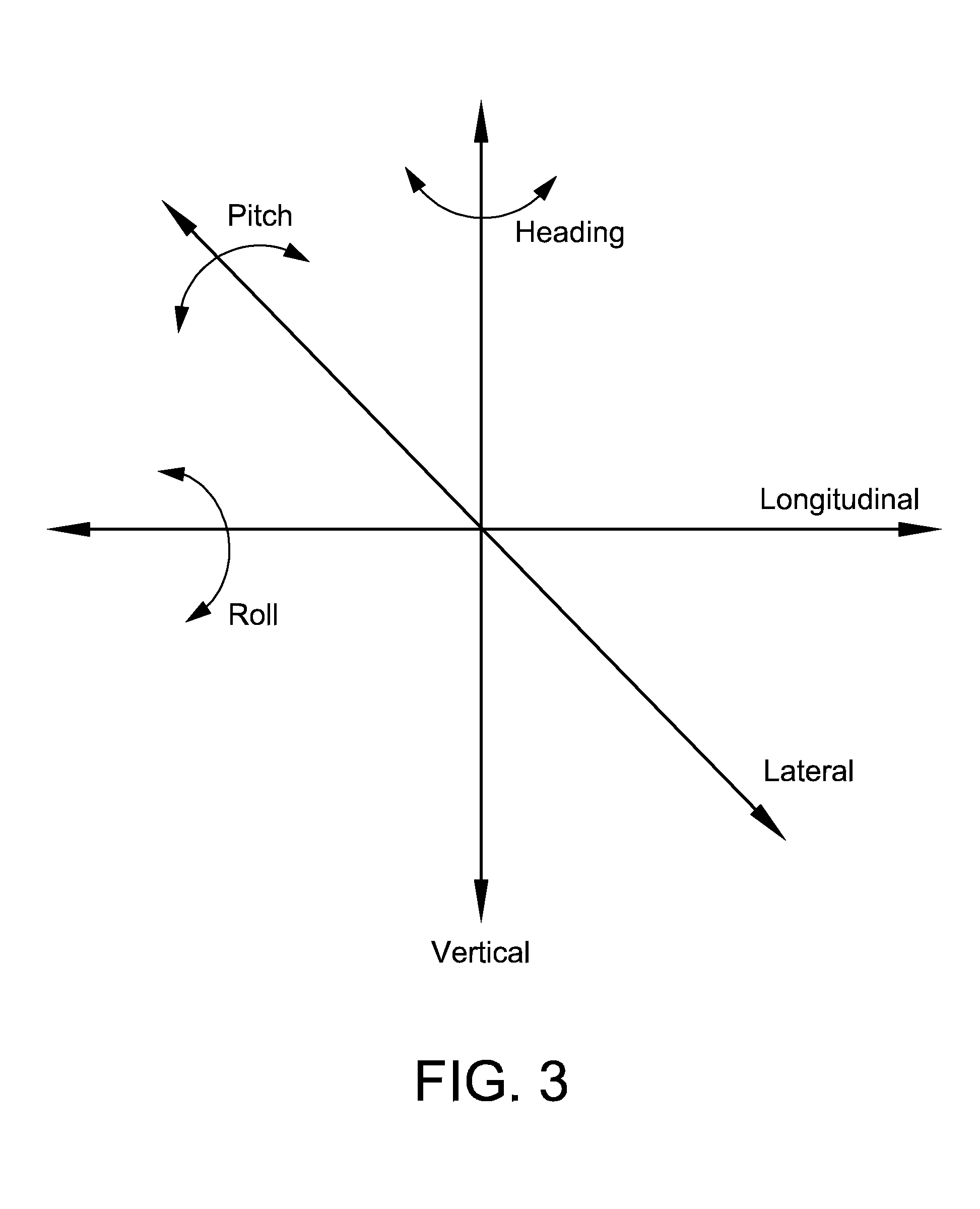Method and apparatus for solving position and orientation from correlated point features in images
a technology of correlated point features and methods, applied in image analysis, image enhancement, instruments, etc., can solve problems such as inconverging and unstable solutions, and achieve the effect of reducing, alleviating, or eliminating one or mor
- Summary
- Abstract
- Description
- Claims
- Application Information
AI Technical Summary
Benefits of technology
Problems solved by technology
Method used
Image
Examples
Embodiment Construction
[0037]Examples of the present invention relate, in general, to the field of epipolar geometry, in particularly, to determine the position and attitude of at least one camera by calculating and extracting the estimated rotation and translation values from an estimated fundamental matrix based on information from at least a first and second 2D image.
[0038]Examples of the present invention will be described more fully hereinafter with reference to the accompanying drawings, in which examples of the invention are shown. This invention may, however, be embodied in many different forms and should not be construed as limited to the examples set forth herein. Rather, these examples are provided so that this disclosure will be thorough and complete, and will fully convey the scope of the invention to those skilled in the art. Like reference signs refer to like elements throughout.
[0039]All the FIGS. 1 to 6 are schematically illustrated.
[0040]FIG. 1 shows an example of two ca...
PUM
 Login to View More
Login to View More Abstract
Description
Claims
Application Information
 Login to View More
Login to View More - R&D
- Intellectual Property
- Life Sciences
- Materials
- Tech Scout
- Unparalleled Data Quality
- Higher Quality Content
- 60% Fewer Hallucinations
Browse by: Latest US Patents, China's latest patents, Technical Efficacy Thesaurus, Application Domain, Technology Topic, Popular Technical Reports.
© 2025 PatSnap. All rights reserved.Legal|Privacy policy|Modern Slavery Act Transparency Statement|Sitemap|About US| Contact US: help@patsnap.com



